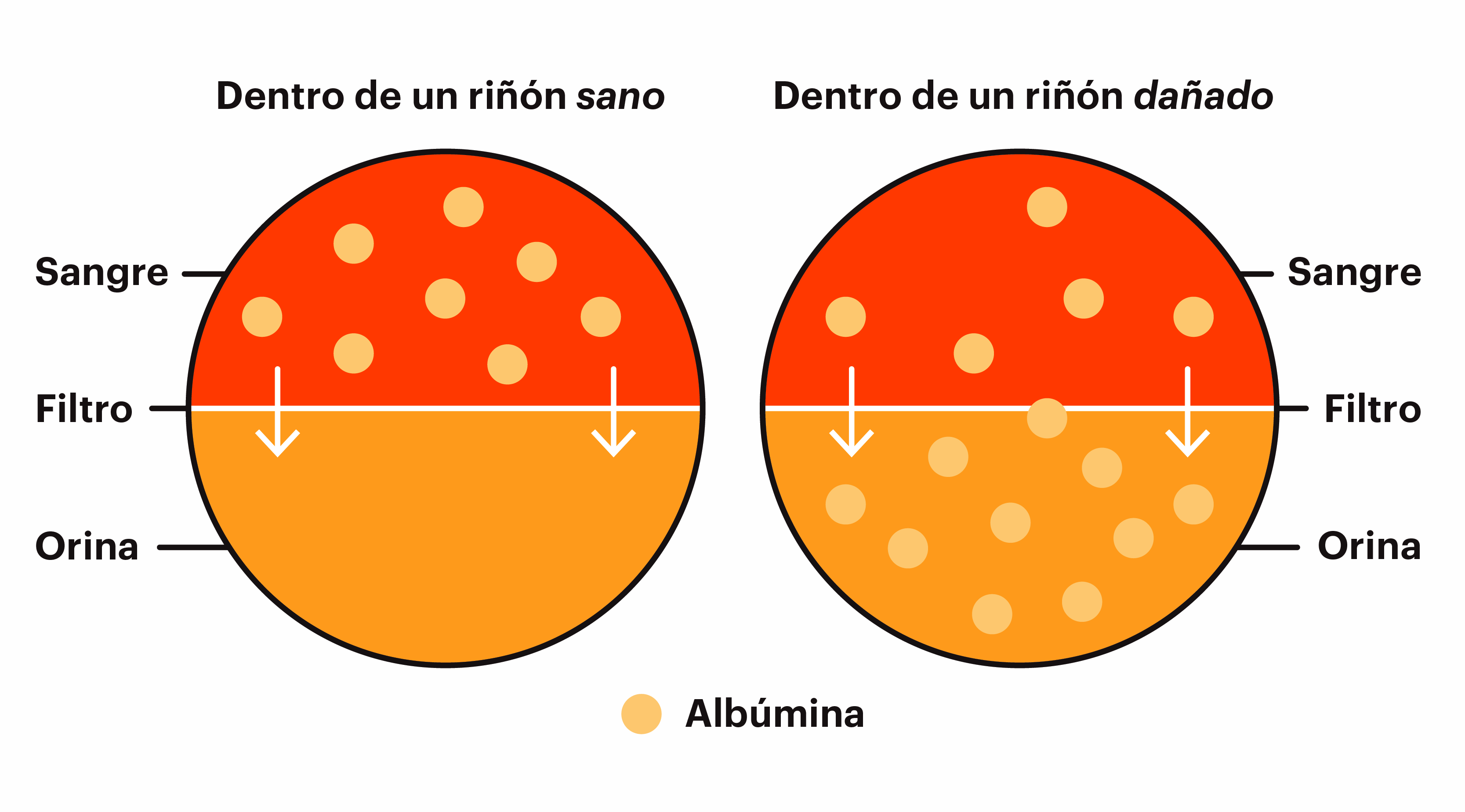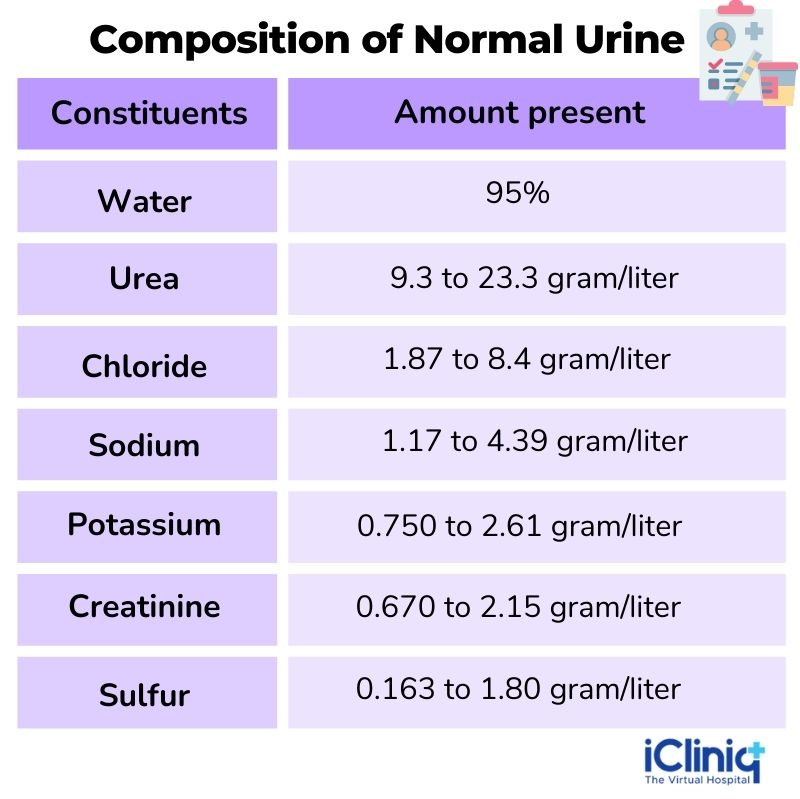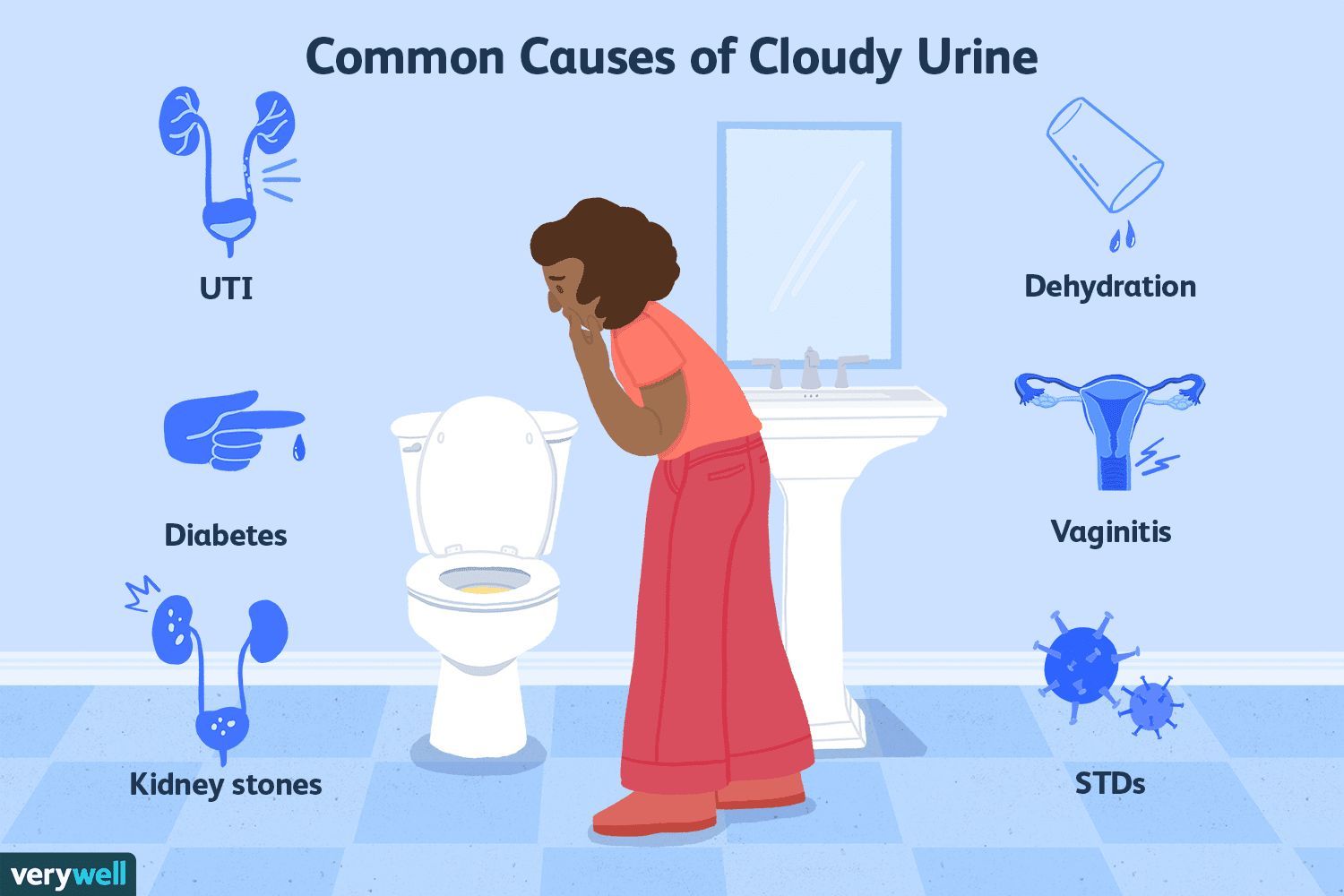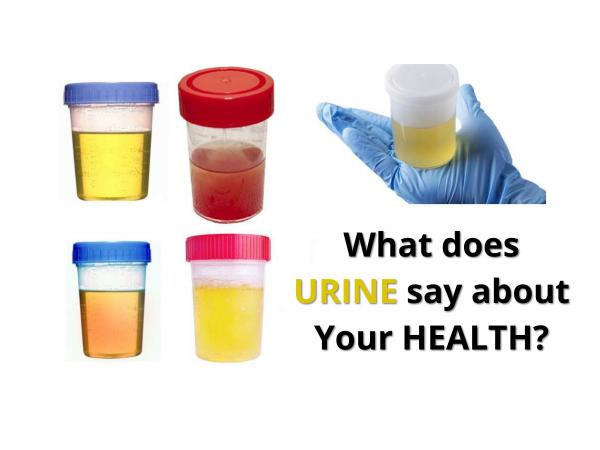Reasons urine is cloudy. 7 Common Causes of Cloudy Urine: Understanding Urinary Health
What are the most frequent reasons for cloudy urine. How can urinary tract infections affect urine appearance. When does dehydration lead to changes in urine color. What role do kidney stones play in altering urine clarity. How do sexually transmitted infections impact urinary health. Why does retrograde ejaculation cause cloudy urine. What causes blood to appear in urine. How do prostate problems affect urination.
Urinary Tract Infections: A Primary Cause of Cloudy Urine
Urinary tract infections (UTIs) are one of the most common reasons for cloudy urine. These infections occur when bacteria invade the urinary system, including the bladder, kidneys, or urethra. UTIs not only cause cloudiness but also bring about a range of uncomfortable symptoms.
What are the tell-tale signs of a UTI?
- Burning or pain during urination
- Increased urinary frequency
- Urinary incontinence
- Foul-smelling or bloody urine
- Lower abdominal pain
Treatment for UTIs typically involves a course of antibiotics prescribed by a healthcare provider. It’s crucial to complete the entire prescription to ensure all bacteria are eradicated.

When to Seek Medical Attention for UTIs
While many UTIs can be managed with antibiotics, certain symptoms warrant immediate medical attention:
- Fever exceeding 100.5°F
- Chills
- Lower abdominal or flank pain
- Nausea or vomiting
Dehydration: The Silent Culprit Behind Cloudy Urine
Insufficient fluid intake can lead to cloudy urine. When the body is dehydrated, urine becomes more concentrated, resulting in a darker color and cloudy appearance. This issue can be easily resolved by increasing daily water consumption.
How can you tell if your urine indicates proper hydration? Well-hydrated individuals typically produce clear, light yellow urine. If your urine is consistently dark or cloudy, it may be a sign that you need to drink more water.
Recognizing Severe Dehydration
While mild dehydration can often be addressed by simply drinking more fluids, severe dehydration requires immediate medical attention. Watch for these warning signs:
- Dizziness or fainting
- Confusion
- Rapid heartbeat
- Difficulty breathing
Kidney Stones: A Painful Cause of Urinary Changes
Kidney stones are crystalline formations that develop in the kidneys from minerals and salts present in urine. These stones can cause urine to back up in the bladder or other parts of the urinary tract, leading to cloudiness and potential discomfort.

What symptoms accompany kidney stones?
- Severe pain in the side and lower back
- Pain or discomfort during urination
- Cloudy or bloody urine
- Foul-smelling urine
- Urine that appears red, pink, or brown
- Fever and chills
- Nausea and vomiting
Treatment for kidney stones varies depending on their size. Some stones may pass naturally, while larger ones might require medical intervention such as lithotripsy (a non-invasive procedure to break up stones) or surgical removal.
When Kidney Stones Require Immediate Care
Seek prompt medical attention if you experience:
- Severe pain in your back or side
- Persistent nausea or vomiting
- Frequent urges to urinate
- Burning sensation during urination
- Pink or red-tinged urine
Sexually Transmitted Infections: An Overlooked Cause of Urinary Changes
Sexually transmitted infections (STIs) can cause cloudy urine due to the presence of milky discharge from the penis or vagina. Infections such as chlamydia and gonorrhea are common culprits behind this symptom.
What other signs might indicate an STI?

- Green, yellow, or bloody discharge from the genitals
- Pain or burning during urination or sexual activity
- Itching around the genital area
Treatment for STIs depends on the specific infection. Bacterial STIs can be cured with antibiotics, while viral STIs may require ongoing management of symptoms. It’s crucial to seek medical attention if you suspect you have an STI, as prompt treatment can prevent complications and reduce transmission to partners.
Retrograde Ejaculation: An Unusual Cause of Cloudy Urine in Men
Retrograde ejaculation is a condition where semen flows backward into the bladder instead of exiting through the penis during orgasm. This results in a “dry” orgasm and can cause cloudy urine immediately afterward due to the presence of semen in the bladder.
What causes retrograde ejaculation? This condition often occurs when the muscle at the bladder opening fails to close properly during ejaculation. Potential causes include:
- Nerve problems associated with diabetes
- Multiple sclerosis
- Certain medications
Treatment for retrograde ejaculation may not be necessary unless it affects fertility. In such cases, healthcare providers can recommend medications to help keep the bladder closed during sexual activity.

When to Consult a Doctor About Retrograde Ejaculation
If you consistently experience little to no semen output during orgasm and are trying to conceive, it’s advisable to consult a healthcare professional for evaluation and potential treatment options.
Blood in Urine: A Serious Cause of Discoloration
Blood in the urine, medically known as hematuria, can cause cloudiness and discoloration ranging from red to pink or brown. This symptom can be indicative of various conditions, including UTIs, kidney stones, or an enlarged prostate. In rare cases, it may signal urinary tract cancer.
Why is it crucial to investigate blood in urine? While some causes of hematuria are benign, others can be serious. Prompt medical evaluation is essential to determine the underlying cause and initiate appropriate treatment.
Symptoms Accompanying Blood in Urine
If you notice blood in your urine, pay attention to any additional symptoms:
- Pain during urination
- Abdominal or back pain
- Fever
- Frequent urination
- Difficulty starting urination
Always consult a healthcare provider if you observe red or pink-tinged urine, especially if accompanied by pain, fever, or other concerning symptoms.

Prostate Problems: A Common Cause of Urinary Issues in Men
The prostate gland plays a crucial role in male reproductive health, producing fluid that nourishes and protects sperm. However, prostate problems can lead to various urinary issues, including cloudy urine.
How do prostate issues affect urination? The prostate gland surrounds the urethra, the tube through which urine exits the body. Any swelling or enlargement of the prostate can obstruct urine flow, potentially leading to the accumulation of blood or debris in the trapped urine, causing cloudiness.
Symptoms Associated with Prostate-Related Urinary Issues
Men experiencing prostate problems may notice several urinary symptoms:
- Pain or burning during urination
- Difficulty starting or maintaining urine flow
- Frequent or urgent need to urinate
- Blood in urine or semen
- Pain during ejaculation
- Fever and chills (in cases of infection)
Treatment for prostate-related urinary issues depends on the underlying cause. Options may include medications to treat infections or reduce prostate swelling, or in some cases, surgical intervention.

When to Seek Medical Attention for Prostate-Related Symptoms
Consider consulting a healthcare provider if you experience:
- Frequent urination, especially at night
- Difficulty starting or maintaining urine flow
- Blood in urine or semen
- Persistent pain or discomfort in the pelvic area
Understanding the Importance of Urinary Health
Cloudy urine can be a sign of various health issues, ranging from minor concerns like dehydration to more serious conditions such as infections or kidney stones. Paying attention to changes in your urine’s appearance, along with any accompanying symptoms, can help you identify potential health problems early.
Why is early detection of urinary issues crucial? Prompt identification and treatment of urinary problems can prevent complications, alleviate discomfort, and maintain overall health. Many urinary conditions are easily treatable when caught early, but can lead to more serious issues if left unaddressed.
Maintaining Optimal Urinary Health
To promote good urinary health, consider implementing these habits:

- Stay well-hydrated by drinking plenty of water throughout the day
- Practice good hygiene, especially in the genital area
- Urinate when you feel the need, rather than holding it in
- Maintain a balanced diet rich in fruits and vegetables
- Limit alcohol and caffeine intake, as these can irritate the bladder
- Exercise regularly to promote overall health and circulation
The Role of Medical Professionals in Diagnosing Urinary Issues
While understanding the common causes of cloudy urine is helpful, it’s important to remember that proper diagnosis often requires professional medical evaluation. Healthcare providers have the tools and expertise to accurately identify the underlying cause of urinary changes and recommend appropriate treatment.
What diagnostic tools do doctors use to investigate urinary issues? Depending on the suspected cause, healthcare providers may employ various diagnostic methods, including:
- Urinalysis to check for infections, blood, or abnormal cells
- Blood tests to assess kidney function and overall health
- Imaging studies such as ultrasounds or CT scans to visualize the urinary tract
- Cystoscopy to examine the inside of the bladder and urethra
The Importance of Open Communication with Healthcare Providers
When discussing urinary issues with your doctor, it’s crucial to provide detailed information about your symptoms, their duration, and any factors that seem to worsen or alleviate them. This information helps healthcare providers make accurate diagnoses and develop effective treatment plans.

Lifestyle Factors That Can Affect Urine Appearance
While many causes of cloudy urine are related to underlying health conditions, certain lifestyle factors can also influence urine appearance. Understanding these factors can help you better interpret changes in your urine and determine when to seek medical attention.
What everyday factors can affect urine appearance?
- Diet: Certain foods and supplements can change urine color or clarity
- Medications: Some drugs can alter urine appearance or odor
- Exercise: Intense physical activity can lead to temporary changes in urine
- Menstruation: In women, menstrual blood can sometimes mix with urine
- Time of day: Urine is often more concentrated in the morning
Distinguishing Between Normal Variations and Potential Health Issues
While it’s normal for urine appearance to vary somewhat throughout the day, persistent changes or those accompanied by other symptoms warrant attention. If you’re unsure whether a change in your urine is cause for concern, it’s always best to consult with a healthcare provider for guidance.

The Impact of Age on Urinary Health
As we age, our urinary system undergoes various changes that can affect urine appearance and overall urinary health. Understanding these age-related changes can help individuals better manage their urinary health and recognize when to seek medical attention.
How does aging affect the urinary system?
- Decreased bladder capacity
- Weakened pelvic floor muscles
- Enlarged prostate in men
- Hormonal changes in women
- Increased risk of urinary tract infections
Maintaining Urinary Health as We Age
While some age-related changes are inevitable, there are steps individuals can take to maintain optimal urinary health throughout their lives:
- Practice Kegel exercises to strengthen pelvic floor muscles
- Stay hydrated, but limit fluid intake before bedtime
- Maintain a healthy weight to reduce pressure on the bladder
- Avoid bladder irritants like caffeine and alcohol
- Schedule regular check-ups with healthcare providers
The Connection Between Urinary Health and Overall Wellness
Urinary health is intricately connected to overall wellness, and changes in urine appearance can sometimes be indicators of systemic health issues. Understanding this connection can help individuals take a more holistic approach to their health and well-being.

How can urinary changes reflect overall health? Changes in urine can sometimes be early warning signs of conditions such as:
- Diabetes
- Liver disease
- Kidney disease
- Certain cancers
- Metabolic disorders
The Importance of a Balanced Approach to Health
Maintaining good urinary health is part of a balanced approach to overall wellness. This includes regular exercise, a nutritious diet, stress management, and routine health check-ups. By paying attention to all aspects of health, including urinary health, individuals can improve their quality of life and potentially catch health issues early when they’re most treatable.
Emerging Research in Urinary Health
The field of urinary health is constantly evolving, with new research shedding light on various aspects of urinary function and disease. Staying informed about these developments can help individuals better understand their urinary health and make informed decisions about prevention and treatment.
What are some areas of current research in urinary health?

- Novel treatments for recurrent urinary tract infections
- Advancements in early detection of urinary tract cancers
- Innovative therapies for managing overactive bladder
- Exploration of the urinary microbiome and its role in health
- Development of new diagnostic tools for urinary conditions
The Future of Personalized Urinary Health Care
As research progresses, the future of urinary health care is likely to become increasingly personalized. This may involve tailored treatment plans based on individual genetic profiles, lifestyle factors, and specific urinary microbiome compositions. While these advancements are still in development, they hold promise for more effective and targeted approaches to managing urinary health in the future.
7 Common Causes of Cloudy Urine
Written by Stephanie Watson
Medically Reviewed by Murtaza Cassoobhoy, MD on May 28, 2023
- Urinary Tract Infection
- Dehydration
- Kidney Stones
- Sexually Transmitted Infection (STI)
- Retrograde Ejaculation
- Blood in the Urine
- Prostate Problems
- More
If you notice that your urine looks cloudy instead of its usual clear, yellowish color, it could be due to infections, kidney stones, or other changes in your health. Sometimes pain or other symptoms go along with it. The sooner you learn the cause, the quicker you can get the treatment you need.
A urinary tract infection (UTI) happens when bacteria get into your bladder, kidneys, or urethra. That’s where urine comes out. Along with cloudy urine, you’ll notice symptoms like:
- Burning or pain when you pee
- A need to go more often than usual
- Leaking urine
- Smelly or bloody urine
- Pain in your lower belly
Your doctor will likely suggest antibiotics to clear up the infection. Finish all the pills that they prescribe to make sure all the bacteria get killed.
Finish all the pills that they prescribe to make sure all the bacteria get killed.
Call your doctor if you:
- Get a fever higher than 100.5 F
- Have chills
- Feel pain in your lower belly or flank
- Are nauseated or throwing up
Your urine can turn cloudy when you don’t drink enough. A lack of fluid makes urine more concentrated. It will also turn a darker color.
You can solve this problem by drinking more water every day. When you get enough fluids, your urine will be clear and light yellow in color.
Call your doctor if you:
- Feel dizzy or faint
- Get confused
- Have a fast heartbeat
- Are breathing hard
Kidney stones are crystals that form in your kidneys out of minerals and salts in your urine. Large stones can make urine back up in your bladder or another part of your urinary tract. They can cause pain, sometimes severe. You might hurt on your side and lower back, or when you pee.
Your urine could get cloudy or have blood in it. It could also be smelly or look red, pink, or brown.
It could also be smelly or look red, pink, or brown.
Some other symptoms you might have are:
- Fever and chills
- Nausea and vomiting
Some kidney stones come out on their own in your urine. Doctors can do a noninvasive procedure to break up stones that are too big to pass through urine. Sometimes, people need surgery to remove stones.
Call your doctor if you:
- Have severe pain in your back or side
- Feel nauseated or throw up
- Have to go all the time
- Have a burning sensation when you pee
- Notice urine that is pink or red
STIs are viral or bacterial infections you catch from a partner during sex. Infections like chlamydia and gonorrhea cause a milky discharge from the penis or vagina that can turn the urine cloudy.
Other signs that you have an STI are:
- Green, yellow, or bloody discharge from the penis or vagina
- Pain or burning when you pee or have sex
- Itching around the penis or vagina
Call your doctor if you have symptoms of an STI. Antibiotics can cure infections caused by bacteria. If a virus caused your STI, medicines can treat the symptoms.
Antibiotics can cure infections caused by bacteria. If a virus caused your STI, medicines can treat the symptoms.
Normally when a man has an orgasm, semen travels out of their body through their penis. In retrograde ejaculation, semen backs up into the bladder. This causes a dry orgasm without any fluid. The urine is cloudy right after an orgasm because it contains semen.
Retrograde ejaculation happens when the muscle at the opening of the bladder doesn’t close tightly enough. Nerve problems from diabetes, multiple sclerosis (MS), or medicines are possible causes.
You may not need treatment for this condition unless you want to start a family and you can’t get your partner pregnant. Your doctor can suggest medicines to keep your bladder closed during sex.
Call your doctor if little or no semen comes out when you have an orgasm and you want to have a child.
Cloudiness is sometimes due to blood in the urine. Blood can stain the yellow urine red, pink, or brown.
Blood in your urine could mean you have a UTI, kidney stones, or an enlarged prostate. Rarely, it can be a sign of cancer in your urinary tract. See your doctor to get this symptom checked out.
Call your doctor if your urine looks red or pink, especially if you also have pain, fever, or other symptoms.
The prostate gland adds fluid to sperm in men. This gland wraps around the urethra, the tube that urine travels through as it moves out of the body.
Any swelling of the prostate can block the flow of urine. Blood or debris can then build up in the trapped urine and turn it cloudy.
When urine is cloudy due to prostate problems, you might also have symptoms like:
- Pain or burning when you pee
- Dribbling or trouble starting to urinate
- An urgent need to go, or frequent urination
- Blood in the urine
- Pain when you ejaculate
- Fever and chills
Your treatment depends on what’s causing the problem. You may get medicines to treat an infection or to shrink your swollen prostate.
Call your doctor if:
- You have to pee all the time
- You get up during the night to pee
- When you pee, urine dribbles out
- You see blood in your pee or semen
- It hurts when you pee or have an orgasm
- You have pain in your lower back, hips, groin, or upper thighs
Top Picks
7 Common Causes of Cloudy Urine
Written by Stephanie Watson
Medically Reviewed by Murtaza Cassoobhoy, MD on May 28, 2023
- Urinary Tract Infection
- Dehydration
- Kidney Stones
- Sexually Transmitted Infection (STI)
- Retrograde Ejaculation
- Blood in the Urine
- Prostate Problems
- More
If you notice that your urine looks cloudy instead of its usual clear, yellowish color, it could be due to infections, kidney stones, or other changes in your health. Sometimes pain or other symptoms go along with it. The sooner you learn the cause, the quicker you can get the treatment you need.
Sometimes pain or other symptoms go along with it. The sooner you learn the cause, the quicker you can get the treatment you need.
A urinary tract infection (UTI) happens when bacteria get into your bladder, kidneys, or urethra. That’s where urine comes out. Along with cloudy urine, you’ll notice symptoms like:
- Burning or pain when you pee
- A need to go more often than usual
- Leaking urine
- Smelly or bloody urine
- Pain in your lower belly
Your doctor will likely suggest antibiotics to clear up the infection. Finish all the pills that they prescribe to make sure all the bacteria get killed.
Call your doctor if you:
- Get a fever higher than 100.5 F
- Have chills
- Feel pain in your lower belly or flank
- Are nauseated or throwing up
Your urine can turn cloudy when you don’t drink enough. A lack of fluid makes urine more concentrated. It will also turn a darker color.
You can solve this problem by drinking more water every day. When you get enough fluids, your urine will be clear and light yellow in color.
When you get enough fluids, your urine will be clear and light yellow in color.
Call your doctor if you:
- Feel dizzy or faint
- Get confused
- Have a fast heartbeat
- Are breathing hard
Kidney stones are crystals that form in your kidneys out of minerals and salts in your urine. Large stones can make urine back up in your bladder or another part of your urinary tract. They can cause pain, sometimes severe. You might hurt on your side and lower back, or when you pee.
Your urine could get cloudy or have blood in it. It could also be smelly or look red, pink, or brown.
Some other symptoms you might have are:
- Fever and chills
- Nausea and vomiting
Some kidney stones come out on their own in your urine. Doctors can do a noninvasive procedure to break up stones that are too big to pass through urine. Sometimes, people need surgery to remove stones.
Call your doctor if you:
- Have severe pain in your back or side
- Feel nauseated or throw up
- Have to go all the time
- Have a burning sensation when you pee
- Notice urine that is pink or red
STIs are viral or bacterial infections you catch from a partner during sex. Infections like chlamydia and gonorrhea cause a milky discharge from the penis or vagina that can turn the urine cloudy.
Infections like chlamydia and gonorrhea cause a milky discharge from the penis or vagina that can turn the urine cloudy.
Other signs that you have an STI are:
- Green, yellow, or bloody discharge from the penis or vagina
- Pain or burning when you pee or have sex
- Itching around the penis or vagina
Call your doctor if you have symptoms of an STI. Antibiotics can cure infections caused by bacteria. If a virus caused your STI, medicines can treat the symptoms.
Normally when a man has an orgasm, semen travels out of their body through their penis. In retrograde ejaculation, semen backs up into the bladder. This causes a dry orgasm without any fluid. The urine is cloudy right after an orgasm because it contains semen.
Retrograde ejaculation happens when the muscle at the opening of the bladder doesn’t close tightly enough. Nerve problems from diabetes, multiple sclerosis (MS), or medicines are possible causes.
You may not need treatment for this condition unless you want to start a family and you can’t get your partner pregnant. Your doctor can suggest medicines to keep your bladder closed during sex.
Your doctor can suggest medicines to keep your bladder closed during sex.
Call your doctor if little or no semen comes out when you have an orgasm and you want to have a child.
Cloudiness is sometimes due to blood in the urine. Blood can stain the yellow urine red, pink, or brown.
Blood in your urine could mean you have a UTI, kidney stones, or an enlarged prostate. Rarely, it can be a sign of cancer in your urinary tract. See your doctor to get this symptom checked out.
Call your doctor if your urine looks red or pink, especially if you also have pain, fever, or other symptoms.
The prostate gland adds fluid to sperm in men. This gland wraps around the urethra, the tube that urine travels through as it moves out of the body.
Any swelling of the prostate can block the flow of urine. Blood or debris can then build up in the trapped urine and turn it cloudy.
When urine is cloudy due to prostate problems, you might also have symptoms like:
- Pain or burning when you pee
- Dribbling or trouble starting to urinate
- An urgent need to go, or frequent urination
- Blood in the urine
- Pain when you ejaculate
- Fever and chills
Your treatment depends on what’s causing the problem. You may get medicines to treat an infection or to shrink your swollen prostate.
You may get medicines to treat an infection or to shrink your swollen prostate.
Call your doctor if:
- You have to pee all the time
- You get up during the night to pee
- When you pee, urine dribbles out
- You see blood in your pee or semen
- It hurts when you pee or have an orgasm
- You have pain in your lower back, hips, groin, or upper thighs
Top Picks
Cloudy urine – reasons why urine is cloudy
The content of the article
- What color should urine be?
- Causes of cloudy urine
- Possible diseases
- 3.
 1. Cystitis
1. Cystitis - 3.2. Metabolic disorders
- 3.3. Urethritis
- 3.4. Prostatitis
- 3.5. Retrograde ejaculation
- 3.6. Glomerulonephritis and pyelonephritis
- 3.7. Presence of urinary stones
- 3.8. Liver diseases
- 3.9. Abnormal vaginal discharge, vulvovaginitis
- 3.10. Sexually transmitted infections
- 3.
- What should I do if my urine becomes cloudy?
What color should urine be?
The normal color of urine is yellow of different shades: from light straw to rich, dark yellow. Such a scatter of options is explained by the presence of urochromes in the urine – special coloring substances, the amount of which determines the intensity of the shade. Urochromes are formed from bilirubin (a substance that colors bile). Together with bile, they first enter the intestines, and then, having been absorbed from it into the blood and oxidized, they are already in the bladder. The more urochromes in urine, the richer and brighter it will be.
The more urochromes in urine, the richer and brighter it will be.
Color intensity is affected by fluid volume and frequency of urination [1]. If, for example, you eat half a watermelon or drink a large amount of water at a time, in addition to changing the frequency of urging to the restroom, you can also notice a change in the usual color of urine. It can become much more transparent and watery than usual. On the contrary, a portion of morning urine after a night’s sleep may have a more saturated color than usual due to the fact that you have not been to the toilet for several hours. If the color is unusual and causes concern, this is a reason to immediately seek the advice of a specialist.
Causes of cloudy urine
“Healthy” urine is transparent, only slightly opalescent, pearlescent [2]. Turbidity in the liquid appears if pathological processes occur in the body, accompanied by other symptoms or without them.
Causes that cause cloudy urine, but are not diseases, include:
- pregnancy and puerperium;
- dehydration in hot weather, after visiting a bath or sauna;
- excessive exercise;
- Too much protein in the diet.

In addition, “stale” urine becomes cloudy, in which bacteria have already begun to multiply.
Transparency will return after the elimination of the cause that caused it. If it does not recover, it is possible that the clouding is caused by some pathology. This is an occasion to consult a specialist for diagnosis and selection of treatment tactics.
Possible diseases
Cystitis
In acute, chronic and recurrent cystitis, urine can change color, transparency, composition and other characteristics. This disease is characterized by cloudy urine of a neutral or alkaline reaction. When analyzing the fluid, a small amount of protein can be detected, the appearance of which is due to leukocytes, erythrocytes, their destruction products, an admixture of exudate, and destroyed cells of the mucous membrane of the urinary organs [3]. Sometimes with cystitis in the urine, mucus and pus can be detected, which also affects its transparency.
All these parameters return to normal with the complex treatment of the disease. In addition to antibiotics for the treatment of cystitis, your doctor may prescribe Phytolysin ® Paste, a natural medicine that is used to relieve the symptoms of cystitis [4].
Phytolysin Paste ® More
It contains natural herbal ingredients and can be successfully used in the complex treatment of cystitis. Due to the diuretic effect, the ability to wash out sand and small stones from the urinary tract and reduce the crystallization of the mineral components of urine, it also acts in the treatment of pyelonephritis – a possible complication of untimely or insufficient treatment of cystitis.
The multi-component natural composition includes nine plant components, as well as four essential oils. Phytolysin ® Paste is easy to use: just dilute a teaspoon in half a glass of water and immediately take the remedy [4].
Metabolic disease
With metabolic disorders and related diseases, for example, with diabetes mellitus or gout, urine can become cloudy due to the presence of salts and glucose in it. The ingress of bacteria into the urine reduces its transparency. In addition, patients with diabetes are more prone to diseases of the genitourinary system. According to studies, bacteriuria is much more common in women with diabetes than without it [5].
The ingress of bacteria into the urine reduces its transparency. In addition, patients with diabetes are more prone to diseases of the genitourinary system. According to studies, bacteriuria is much more common in women with diabetes than without it [5].
Urethritis
With an inflammatory process in the wall of the urethra, urine can also become cloudy. Moreover, this symptom does not depend on the cause that caused the disease, nor on its form – acute or chronic. Turbidity may be accompanied by a change in the smell of the liquid, the appearance of blood drops at the end of urination, and pus impurities [6, 7]. Often, dense threads can be seen in the urine container, which eventually settle to the bottom.
Prostatitis
Along with frequent urination, nighttime urge to go to the toilet, pain in the groin and lower back, disorders of sexual function, cloudy urine with mucus is one of the characteristic signs of prostatitis [8].
retrograde ejaculation
Turbidity of this physiological fluid can be observed with retrograde ejaculation. With this violation, part of the sperm during ejaculation remains in the urethra and enters the bladder, causing a change in the transparency of the urine in it. This phenomenon can be caused by certain medications (eg, for high blood pressure, prostatitis, urethral diseases), diabetes mellitus, or medical interventions in the genital area [9].
With this violation, part of the sperm during ejaculation remains in the urethra and enters the bladder, causing a change in the transparency of the urine in it. This phenomenon can be caused by certain medications (eg, for high blood pressure, prostatitis, urethral diseases), diabetes mellitus, or medical interventions in the genital area [9].
Glomerulonephritis and pyelonephritis
In these diseases, the fluid contained in the bladder also becomes opaque [10]. The reason for this is the content in it of an increased number of erythrocytes, epithelium and protein.
Presence of urinary stones
Kidney stones or sand are crystals that form from minerals and salts. If large formations block the urinary tract, and smaller ones move along them with fluid flow, this can cause not only acute pain and the appearance of blood drops, but also turbidity, sometimes with an admixture of small stones [11].
Liver disease
Hepatitis and other liver diseases affect the clarity of urine. So, it can become dark, cloudy, sometimes with the inclusion of fat drops [12].
So, it can become dark, cloudy, sometimes with the inclusion of fat drops [12].
Abnormal vaginal discharge, vulvovaginitis
Physiologically, the urethra and vagina in women are located close to each other. That is why part of the secretions, especially if there are more of them than in a healthy state, can get into the urine and deprive it of transparency.
Most often, vulvovaginitis is caused by bacteria, fungi, or viruses. However, the causes of inflammation of the vulva and vagina can also be hidden in allergic reactions to hygiene products, soap, spermicides, washing powder or fabric softener. In addition, vulvovaginitis can cause a natural decrease in estrogen levels during breastfeeding or after menopause [13, 14, 15]. One of the symptoms of vulvovaginitis may be a change in the transparency of urine.
Sexually transmitted infections
Viral and bacterial infections transmitted from partner to partner during intercourse cause not only itching, redness, burning and showdown. Many STIs are accompanied by discharge from the vagina or penis. It is these secretions that enter the urine during urination, making it cloudy.
Many STIs are accompanied by discharge from the vagina or penis. It is these secretions that enter the urine during urination, making it cloudy.
In addition to the above conditions, urine can become cloudy with oncology medications [16] and an overactive bladder [17].
What to do if urine becomes cloudy?
Changes in the color and transparency of urine are one of the first signs that it is time to make an appointment with a doctor. Before visiting a specialist, remember what you ate or drank during the day before the onset of an alarming symptom, whether there were injuries to the abdominal cavity. Write down and tell at the reception what medications you are taking and for what. To make the consultation as effective as possible, it is worth coming to the doctor’s office already prepared: take a general urine test and take the results with you. If necessary, the doctor will prescribe additional examinations for you, but he will be able to draw the first conclusions on the basis of ready-made tests.
In addition to color and transparency, it is worth paying attention to other parameters – volume per trip to the toilet, smell (normal or specific), frequency and strength of urges. Perhaps, along with changes in the color and transparency of urine, you experience a feeling of incomplete emptying of the bladder or pain when urinating. It may be that these symptoms are accompanied by fever, abdominal pain, or upset stools. Be sure to tell a specialist about this, then the diagnosis will be the most complete.
Keep in mind that not all types of urinalysis include a test for transparency and color. If necessary, the doctor will write directions for additional examinations.
Changes in urine – norm, causes, diagnosis, treatment
How urine is formed
Urine is formed in the process of filtering blood by the kidneys. Passing through the kidneys, the blood is cleared of unnecessary substances. Its main volume is sent back to the bloodstream, and a small amount of fluid is excreted from the body in the form of urine.
Each kidney consists of several segments – nephrons. There are glomeruli and tubules in the nephron
Blood is filtered in the glomeruli of the kidney. The resulting liquid is called primary urine
In the tubules of the kidney, primary urine is filtered again, and part of the liquid is again sent to the bloodstream (this process is called reabsorption)
Urine consists of 95% water and 5% of impurities: electrolytes, breakdown products of cell components .
If a person becomes ill, the composition of the urine changes. For example, with inflammatory kidney disease, urine may become cloudy or change color. And in diabetes mellitus, the volume of excreted fluid increases significantly.
Main characteristics of urine
Changes in urine can indicate a variety of pathologies: kidney disease, infectious processes, endocrine disorders.
You can notice some violations on your own. For example, that there is less urge to go to the toilet and less urine, or that the liquid has changed color or smell. Others can only be identified in the course of laboratory tests.
Others can only be identified in the course of laboratory tests.
Urinalysis
Urine 24 1 day
24 bonuses
240 ₽
Add to cart
1 day
Urine 0 ₽
Urinalysis according to Nechiporenko
Urine 25 1 day
25 bonuses
250 ₽
Add to cart
1 day
Urine 0 ₽
Urinalysis according to Zimnitsky
Urine 43 1 day
43 bonuses
430 ₽
Add to cart
1 day
Urine 0 ₽
Urine culture for microflora
Urine 67 1 day
67 bonuses
670 ₽
Add to cart
1 day
Urine 0 ₽
Analysis of mineral metabolism (23 elements) (urine)
Urine 320 5 days
320 bonuses
3 200 ₽
Add to cart
5 days
Urine 0 ₽
There are a number of urine characteristics that are used to assess the urinary, endocrine and other systems. Changes can be qualitative or quantitative. Among the qualitative ones are such indicators as color, transparency, foaminess. Among the quantitative ones is the volume of fluid released during the day.
Among the quantitative ones is the volume of fluid released during the day.
Quantity
The amount of urine excreted, or diuresis, is determined during a daily analysis: the patient collects urine in a container for 24 hours, and then estimates its approximate volume. The normal amount of urine is from 800 ml to 2 liters. If urine output is less than 500 ml, the diagnosis is oliguria. If more than 2 liters – “polyuria”.
Possible causes of changes in urine volume
Oliguria – a decrease in the amount of urine separated – may indicate dehydration (for example, with fever or vomiting), severe blood loss (in case of injury, after surgery, during menstruation).
Polyuria may indicate the development of diabetes or diabetes insipidus, excessive production of the hormone by the parathyroid glands or the adrenal cortex. Also, polyuria may indicate diseases of the urinary system.
Color
The color of urine is determined by the bile pigment, which is produced in the liver during the breakdown of hemoglobin. Normally, urine should be clear or light yellow.
Normally, urine should be clear or light yellow.
Possible causes of discoloration of urine
A change in the color of urine does not always indicate pathology. Hue may change due to natural or synthetic dyes present in food, or changes in fluid intake.
The color of urine can determine the general condition of the body and identify some pathologies, including dehydration
Also, the color of urine can be affected by medications taken: depending on the drug, it can become bright yellow, orange, reddish or dark brown.
However, if the color of the urine has changed for no apparent reason, this is a reason to be examined. Hue may change due to kidney disease
(pyelonephritis, urolithiasis, kidney infarction) and liver (hepatitis, cirrhosis, cholelithiasis) or in case of metabolic disorders.
Transparency
Fresh urine should normally be completely clear. Gradually, it may precipitate from salts and mucus.
Possible reasons for the change in transparency
If the urine is cloudy or with a suspension, this may indicate that it contains salts, bacteria, mucus. This composition indicates inflammatory diseases of the urinary system, urolithiasis or metabolic disorders.
This composition indicates inflammatory diseases of the urinary system, urolithiasis or metabolic disorders.
Urine may also become cloudy if a person eats a lot of fish and seafood.
Specific Gravity (Density)
Specific gravity indicates how dense the urine is, i.e. concentrated. The indicator is quite unstable: it changes during the day (urine has the highest density in the morning), depends on the amount of fluid you drink and even on the air temperature outside. However, significant deviations from the norm may indicate the development of pathological processes.
Possible causes of changes in specific gravity
A significant deviation in the density of urine from the norm can develop with metabolic disorders, diseases of the kidneys or bladder, hormonal imbalance, inflammatory diseases. Also, the density can increase with dehydration: diarrhea, vomiting, intense training.
This is one of the indicators that a person can notice even without a laboratory test: the richer the color of the urine, the higher its specific gravity. An increase in the density of urine without an obvious reason (for example, a recent poisoning) is a reason to consult a doctor.
An increase in the density of urine without an obvious reason (for example, a recent poisoning) is a reason to consult a doctor.
Odor and foaminess
Normally, fresh urine is practically odorless and does not foam.
Possible causes of odor or foam
If the urine has a sharp or specific odor, this may indicate dehydration, diseases of the urinary system (pyelonephritis, cystitis), urogenital infections or serious metabolic disorders.
Foaming is usually caused by protein. It can get into the urine with kidney pathologies.
If the urine foams, see a doctor and get tested
Acidity (pH)
The reaction of urine – more acidic or alkaline – reflects the acid-base balance throughout the body. According to this indicator, a number of violations can be identified and the body’s ability to resist infections can be determined.
Possible causes of changes in acidity
A change in pH can indicate diseases of the kidneys and bladder, such as thyroid dysfunction, diabetes, gout. Acidity can change during acute pathological processes: fever, vomiting.
Acidity can change during acute pathological processes: fever, vomiting.
The reaction is also influenced by the characteristics of the diet: if a person eats a lot of meat and protein foods, the environment becomes acidic, if the diet is dominated by vegetables and cereals, it becomes alkaline. When fasting, acidity rises.
Urine pH can be determined independently using test strips
What to do if your urine changes
Deviations from the norm do not always indicate pathological disorders. First of all, when collecting, there is a high probability of error – for example, mucus may appear if it is bad to wash or collect not the middle, but the first portion of urine. Among other factors that may affect the result: incorrect storage of the material (in a warm place, more than 12 hours), use of a non-sterile container, examination during menstruation.
If the analysis is not normal, the doctor will most likely ask for a second urine test.
Which doctors to contact if violations are detected
In case of any abnormalities in the properties or analysis of urine, you should consult a general practitioner.

 1. Cystitis
1. Cystitis